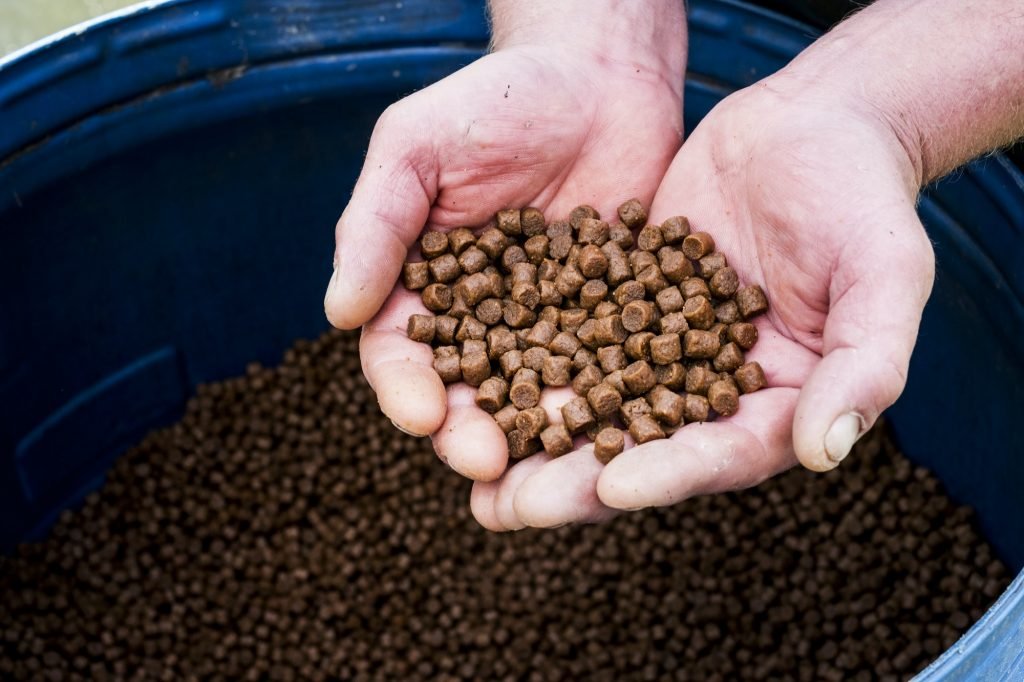Feeding your aquaponics fish is one of your daily tasks when running an aquaponics system. It is vital for the fish and, in turn, essential for the production of plant nutrients. In this article, we’ll talk about the what, when, and how to feed your fish. We’ll also talk about using auto-feeders for the ones among you who like to automate life!
WHAT TO FEED
The type of food you feed your fish is important, and there are many commercially available feeds on the market. There are also a lot of recipes for making your own fish food, but we won’t go into that here. When it comes to what to feed your fish, there are three main things to consider: size, age, and species.
Small fish need small food, while larger fish can eat bigger pieces or pellets. Young fish need smaller food than adult fish, as their digestive systems are not as mature. Different species of fish also have different dietary needs, so it’s important to do your research on what to feed your particular fish.
With regards to the actual feed, most people opt for commercial feed, which is an excellent choice. A commercial feed is either of the omnivorous or carnivorous type and these will differ in their quantities of protein. Check with your local fisheries department for the most suitable one for the particular fish species you are growing; though most fish thrive well on both. Feed also comes in different pellet sizes and, as you now know, you should get the small ones for young fish and the larger ones as the fish grow bigger.

Many commercial aquaponics farmers grow their own fish feed to drastically cut costs. The most commonly grown of such feeds is duckweed, a fast-growing plant that is rich in protein. You can grow this in a separate tank or pond. To provide more protein, you can also grow worms and black soldier fly larvae. You can also feed your fish some garden scraps. For example, most omnivorous fish will enjoy bland-tasting plants and vegetables such as lettuce. Be careful that the plant food you give the fish is not covered in pesticides or other harmful chemicals.
WHEN TO FEED
The rule of thumb for when to feed your fish is to feed them once a day. However, there are some exceptions to this rule. For example, you might want to reduce the amount of food you give your fish if the water temperature is high or if you’re experiencing an algae bloom.
Most fish are not picky about feeding schedules; indeed, in the wild, there is no such thing as regular feeding. They will adjust their metabolisms and growth rates according to food availability. So if you want to grow fish quickly, simply feed them often. However, be careful with crowding because a population density that is too high will make the fish labile to disease outbreaks. With regards to the actual amounts of feed per feeding session, you should give them as much feed as they can eat within five minutes.
HOW TO FEED
The easiest way to feed your fish is to use a fish feeder. These come in many shapes and sizes, but all work in more or less the same way. They usually have a hopper that you fill with food, which then dispenses the food into the water at regular intervals. This takes the guesswork out of feeding your fish and means you can go away on holiday without worrying about them!

As we said, many automatic feeders are available, differing in complexity and price. However, you can get simple, cheap ones that will do the job just fine. You should set the feeding times to once or twice daily, possibly more if you want to grow fish quickly and have a low stocking density. Using an automatic feeder does not mean that you can stop checking on your system daily, because if you do, you won’t know if anything goes wrong with the system.
Some people prefer to hand feed their fish, which is a more interactive way to feed them. To hand feed your fish, simply drop the food into the water and let the fish eat it from there. This can be a good way to bond with your fish and check on their health.
No matter how you choose to feed your fish, make sure you do it at the same time each day so they get into a routine. And most importantly, have fun!